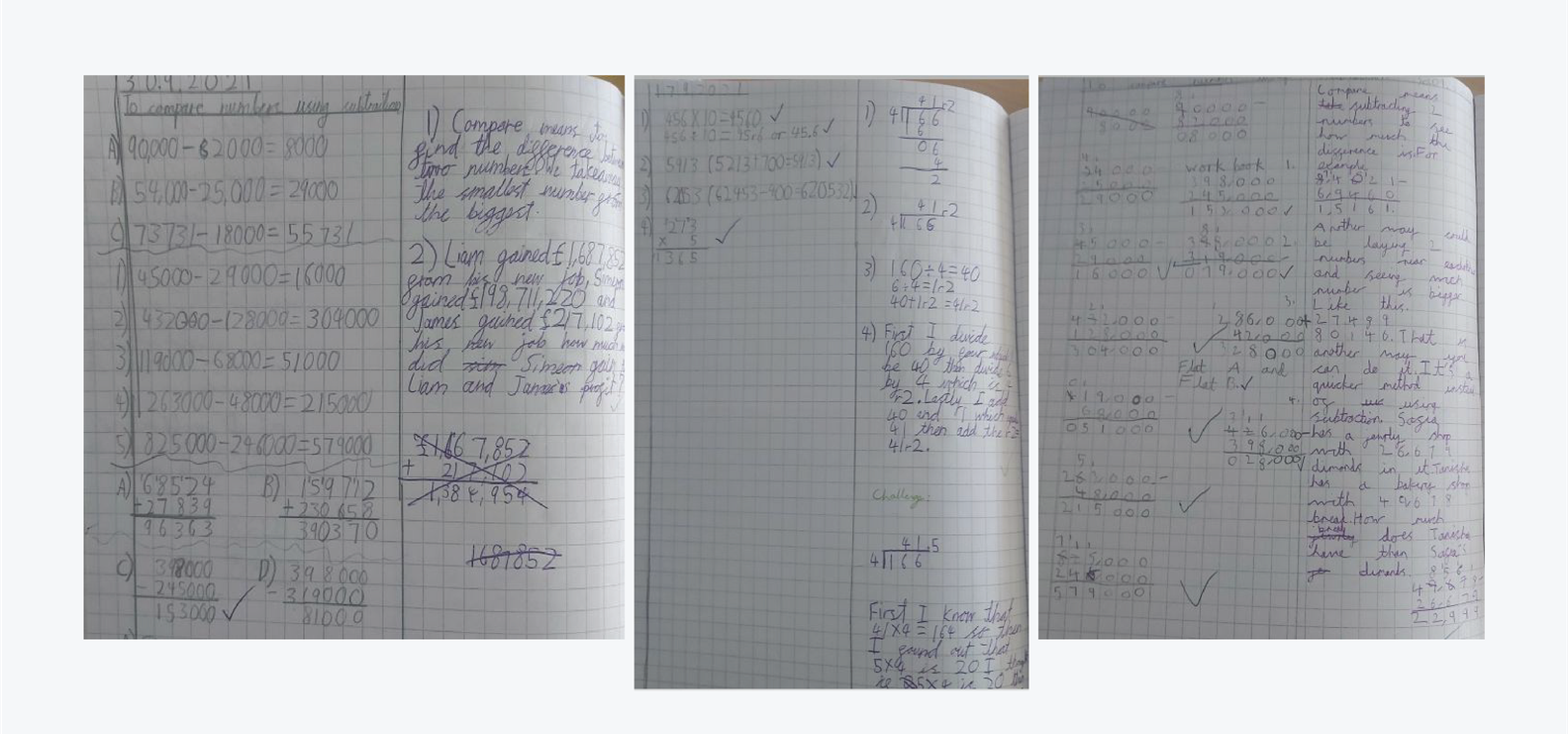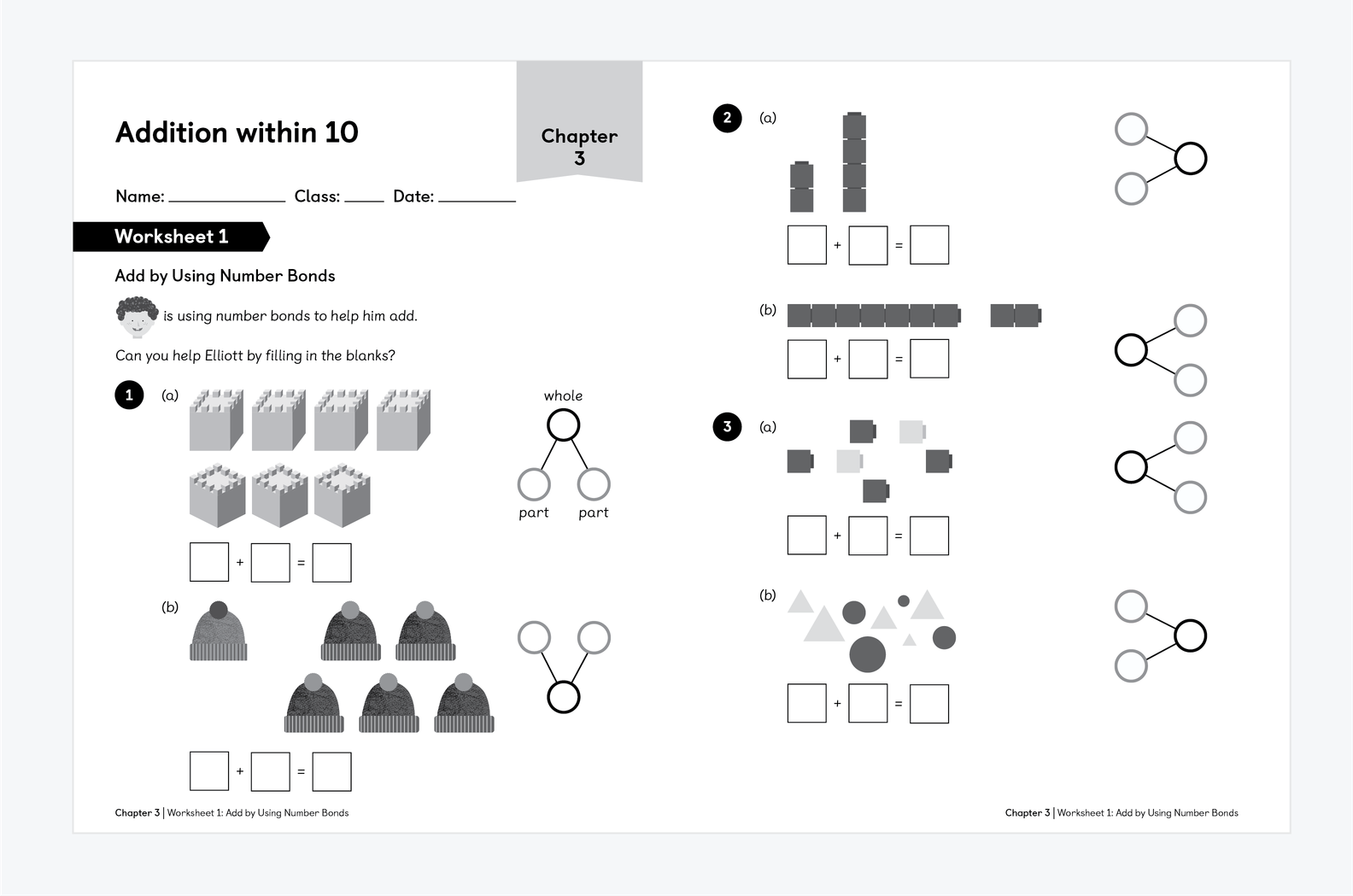Using Maths — No Problem! with children working below age-related expectations
How to use a mastery approach to help all learners flourish and build a love of maths.
Non-teachers may imagine a maths lesson going a bit like this: a teacher at the front, a class of smiling children happily and silently working through their maths textbook at the same time, at the same speed, with the same understanding. But this simply is not the case, is it? All learners are different — they have different levels of understanding, different experiences, different personalities and ultimately different abilities.
In primary schools in England, children are assessed against the National Curriculum in all subjects through formative and summative assessments. Children are grouped based on the following assessment terms:
- Working below or towards age-related expectations
- Working at age-related expectations
- Working above age-related expectations
So how can maths be taught in a way that supports those children working below age-related expectations?
Support Strategies
Pre-teaching
A simple strategy to support children not yet working at age-related expectations is to implement pre-teaching. This can be run by a teaching assistant, student teacher or class teacher. Before you start a new maths topic, use assembly time or other non-learning times to introduce the topic and work through an example with learners who you anticipate will require further support.
You could then include these learners during whole-class teaching, when the class is learning together. This will not only help the intervention children to master the concept by ‘teaching’ it to their peers but also give them a big confidence boost.
Intervention
Specific, targeted and measured interventions are a great tool to use after identifying a gap in children’s learning. Interventions should be short and not take the child away from any further learning.
For example, if you have identified a child or group that doesn’t understand odd and even numbers, you can set up interventions that week using different methods to reinforce the learning — flashcards, bingo games and quizzes are all fun ways to do this. If you have the space, why not get active and engage kinesthetic learners? Simply stick the number flashcards around the hall and ask the intervention group to run to the odd or even numbers! Communicating with the child’s adults will also encourage them to support and reinforce this learning at home.
Removing barriers
It is important to understand why some children may find it harder to access the maths curriculum. Barriers to learning such as reading ability, real-life experiences, language barriers and emotional needs are just some examples of barriers that may impact a child’s maths understanding.
Reading and writing should not be barriers to maths. Ultimately in the SATs, children who would benefit from having a reader, scribe or prompt will receive one, so it is important to give children the same support during maths lessons. Without additional adult support, this can be tricky but simple things such as ensuring word problems are read as a class or phonetically decodable with the addition of a phonics word mat can help.
Growth mindset
Maths can have a bad reputation. How many adults say things like “I hate maths!” or “I’m rubbish at maths!” This rhetoric rubs off on children, so teachers and parents alike need to speak about maths positively. A great way to build children’s confidence towards all subjects is to practise a growth mindset.
The Education Endowment Foundation noted in a 2015 project that pupils who received growth mindset workshops made an average of two additional months’ progress in English and maths. So how can you encourage a growth mindset?
- Positive talk — even if maths isn’t your favourite subject, act like it is!
- Celebrate mistakes — mistakes should be encouraged, explored and shared
- Careful praise — celebrate effort and refer to specific learning behaviours instead of using blanket terms like ‘clever’
- Talk about learning — discuss how to solve problems and share methods. Journalling is a great way to do this
Transform Your Maths Assessment
Insights — our online assessment tool — gives you instant, powerful data to identify gaps and improve results.

Teach maths outside of maths lessons
To improve mathematical understanding, it is important for children to ‘bump into’ maths in a range of contexts, for example, storybooks, puzzles, songs, rhymes, puppets and games. Throughout the day, explicitly refer to maths in routines and timetables and use maths vocabulary.

Excerpt from Magic Oven, one of the Maths — No Problem! Foundations picture books
CPA approach
The Maths — No Problem! Programme is centred around the CPA approach, which is an inclusive practice that supports all learners. Manipulatives and representations are powerful tools to encourage children to engage with mathematical ideas. Children, especially those working towards the expected standard, should have access to a range of manipulatives and be encouraged to represent problems in their own way, for example with drawings and marks.
Communication
Journalling is at the heart of Maths — No Problem! Programme. Communication through this method gives children the opportunity to articulate their thinking and steadily build upon prior learning. Children who find writing harder could use google voice type on an iPad or Chromebook to support their journalling.

Journalling by KS1 pupils working in the Maths — No Problem! Programme
Scaffolding
The Maths — No Problem! textbooks are sequenced in a way which supports all learners. Concepts are introduced through the Explore task and children should have access to physical resources to manipulate and aid their learning. The sequence then moves onto tasks which have visual cues to follow, before finally leading to independent work which builds on what children have already learnt through exploring with concrete and pictorial representations.


Excerpts from a Year 1 textbook and workbook in the Maths — No Problem! Primary Series, New Edition
Be Flexible
As teachers and parents, you know your children. You personalise teaching and learning every day and with Maths — No Problem! the hard part is done for you. You can pick up a textbook, confident that the content is based on research and expertly sequenced to support all learners. If needed, some learners may spend longer on Explore tasks or require additional practice in different areas and that’s okay. Remember you can access all year groups’ work on the Maths — No Problem! Hub where you can source additional resources to support learners with gaps and interventions.

